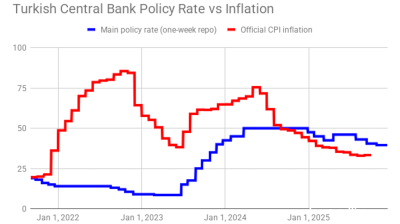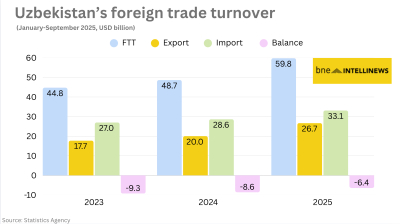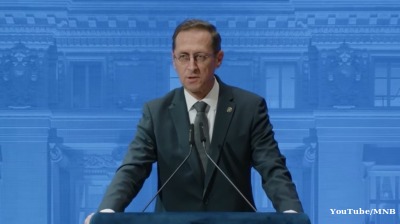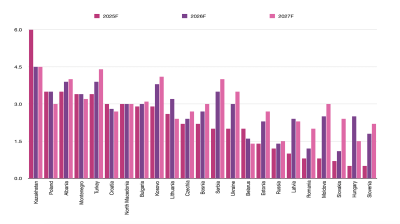The Czech National Bank (CNB) reduced its base interest rate by 25 basis points to 3.5% on May 7, marking its fourth consecutive rate cut and signalling that the easing cycle is nearing its end, ING said in a note on May 7. (chart)
While the decision matched market expectations, it was accompanied by a tone less hawkish than in previous communications.
“The overall message from the CNB was hawkish, yet less so than we had expected and than in previous press conferences,” said David Havrlant, Chief Economist for the Czech Republic at ING. He cited persistent inflation in services, rising wages, and accelerating housing prices as core reasons behind the central bank's continued caution. Still, softer energy prices and weaker global growth outlooks contributed to a more balanced message.
Headline inflation surprised to the downside in April at 1.8%, falling below the CNB’s 2% target due to falling food prices. Nevertheless, both the CNB and ING expect inflation to rebound in May. “Food prices are rather volatile and may revert soon, while the price dynamics of services and core inflation are set to remain relatively strong,” Havrlant said.
The CNB’s updated forecast allows for one further rate cut, potentially by August, before entering a period of rate stability. Growth projections were maintained at 2% for 2024, with household consumption as the primary driver. However, the outlook for 2025 was revised down to 2.1% amid subdued foreign demand and persistent structural issues in the European economy.
“Lower real growth prospects, substantially lower global energy prices, and a stronger exchange rate are now accompanied by more potent inflation,” said Havrlant. Inflation is expected to average 2.5% this year and 2.2% in 2025, both slightly above earlier forecasts.
Frantisek Taborsky, EMEA FX & FI Strategist at ING, noted that the CNB board now assesses inflation risks as “modestly inflationary,” a softening compared to prior meetings. He emphasised that the Czech koruna remains well supported. “We continue to predict a stronger koruna, fostered by the renewed convergence toward more advanced economies and potent rates differential vis-à-vis the ECB,” Taborsky said.
Despite positive real interest rates and weakening inflation pressures, domestic factors like sticky services prices and increased defence spending could delay additional easing. Meanwhile, weak investment sentiment remains a pressing concern. “Today’s investment simply means future growth potential, and it will become the number one topic over the coming months unless inflation brings a nasty surprise,” said Havrlant.
Taborsky added that another rate cut is likely in August, contingent on continued low inflation and subdued investment. “The door seems open to further rate reductions, largely depending on an acceptably low inflation environment and a lack of clarity in Europe’s growth strategy.”
Markets responded mildly to the CNB’s announcement. The koruna traded around 24.900 to the euro following the press conference, while the CZK yield curve flattened slightly. “The central bank tried to put on its usual hawkish face, but markets are used to that tone by now,” Taborsky said. “A rebound in inflation over the next two months should again show the central bank turn more hawkish.”
Data

Turkey's central bank remains cautious, delivers 100bp rate cut
Decision comes on eve of next hearing in trial that could dislodge leadership of opposition CHP party.

Polish retail sales return to solid growth in September
Polish retail sales grew 6.4% year on year in constant prices in September, picking up from a 3.1% y/y rise in August, the statistics office GUS said.

Uzbekistan’s nine-month foreign trade nears $60bn
Export growth of 33% and import expansion of 16% y/y produce $6.4bn deficit.

Hungary’s central bank leaves rates unchanged
National Bank of Hungary expects inflation to fall back into the tolerance band by early 2026, with the 3% target sustainably achievable in early 2027 under the current strict policy settings.




